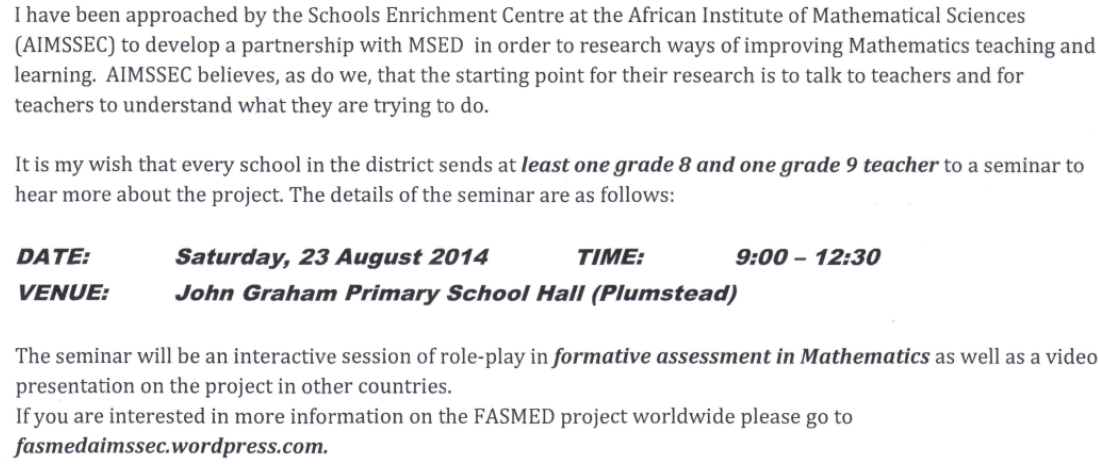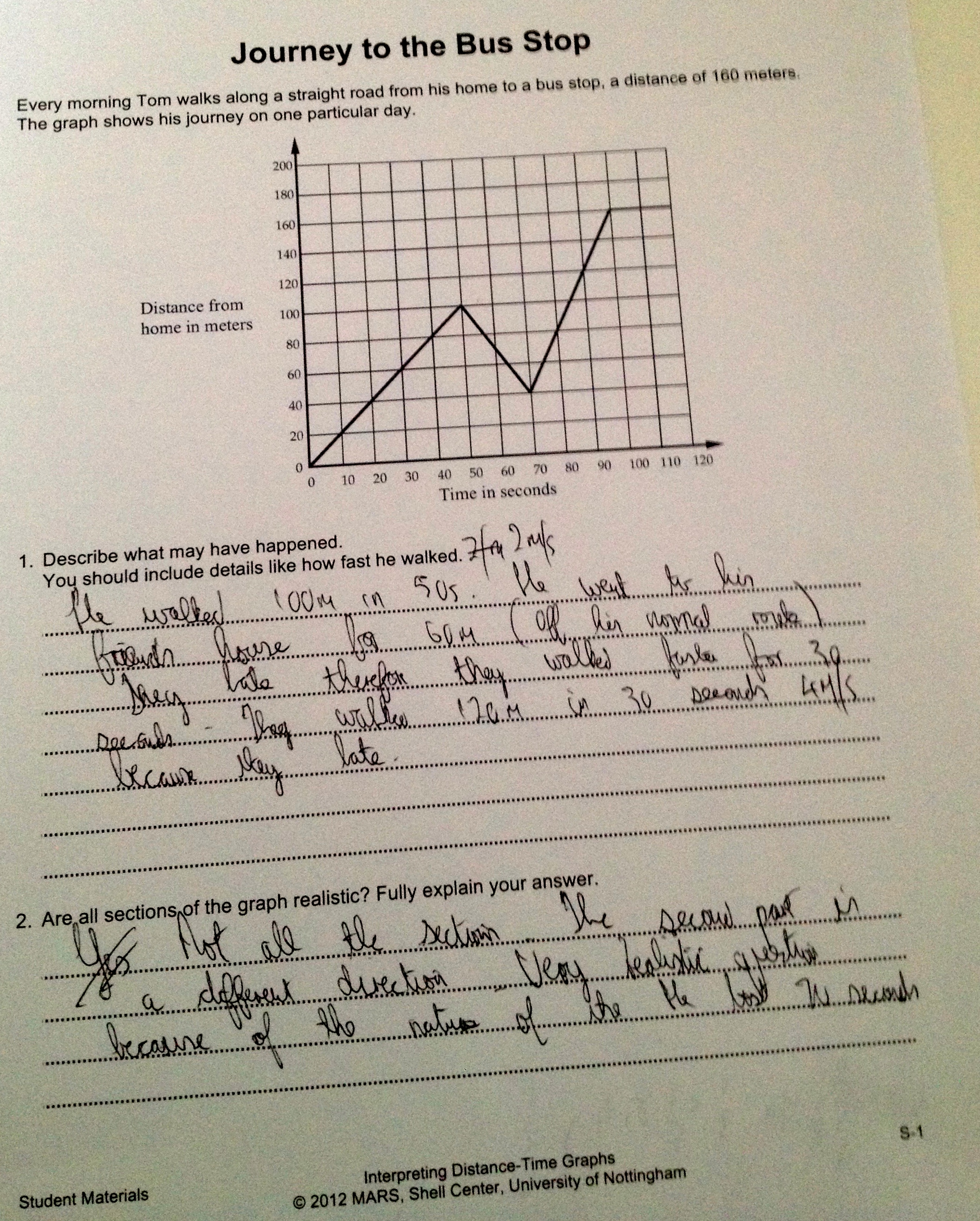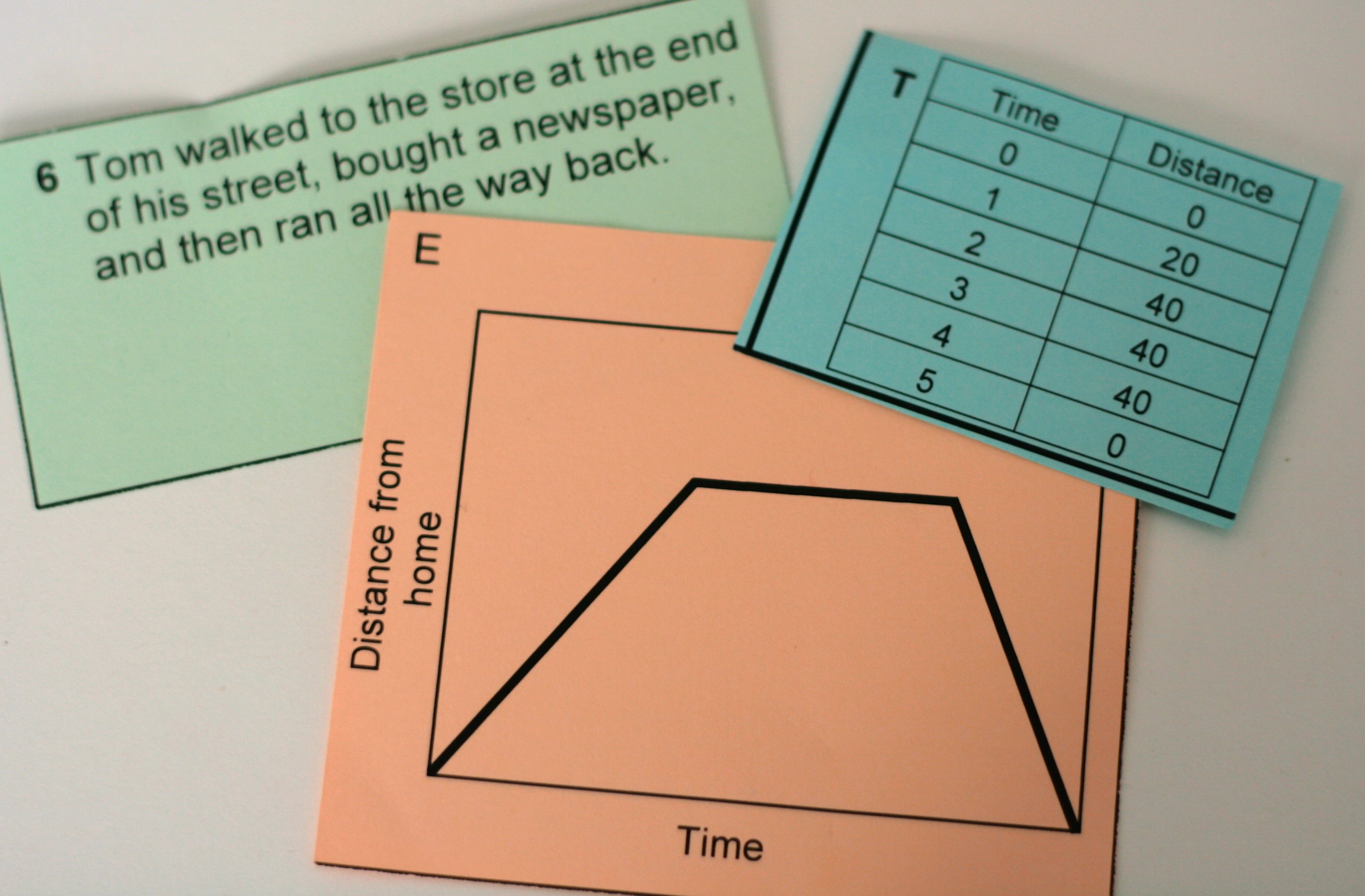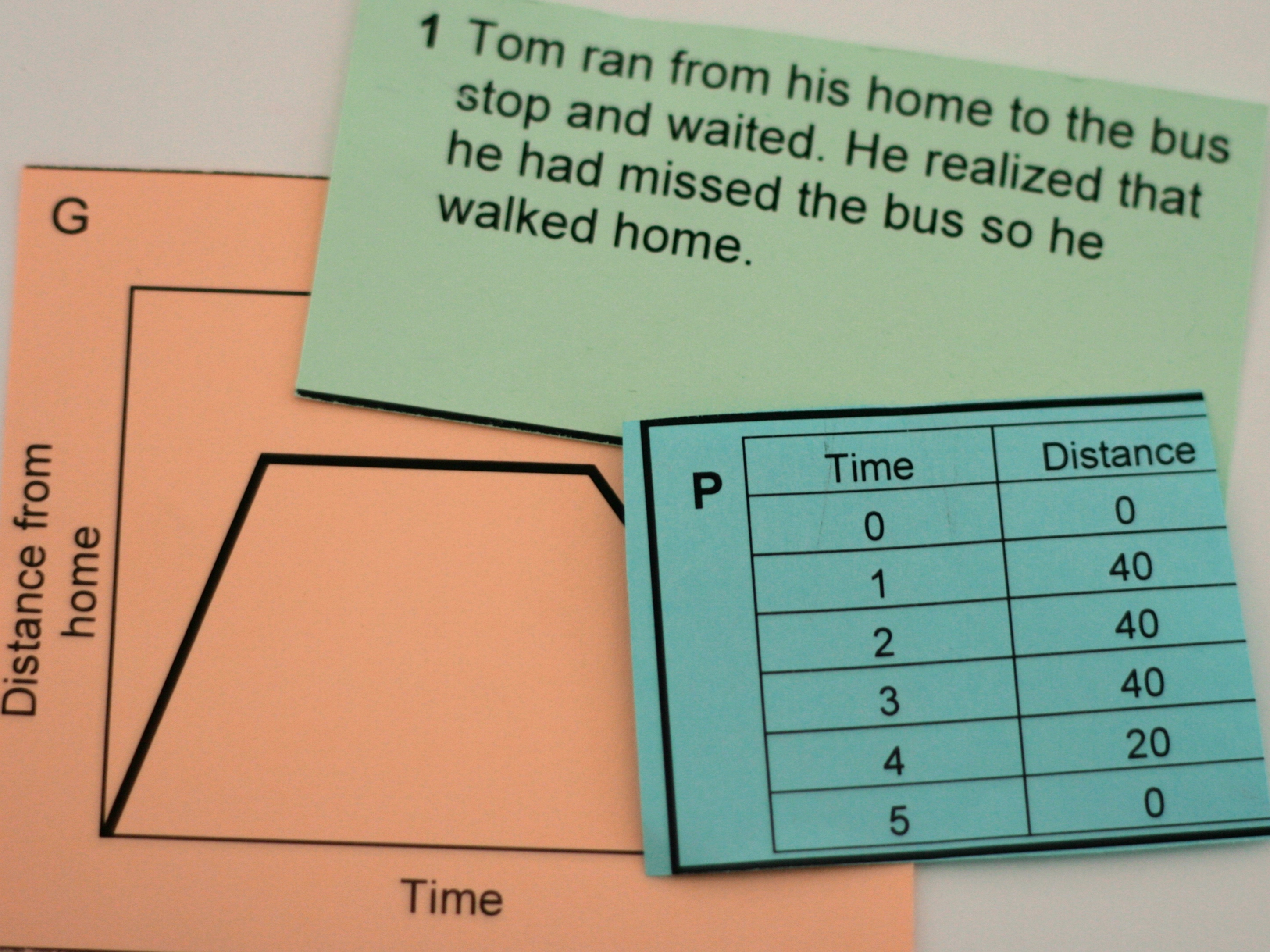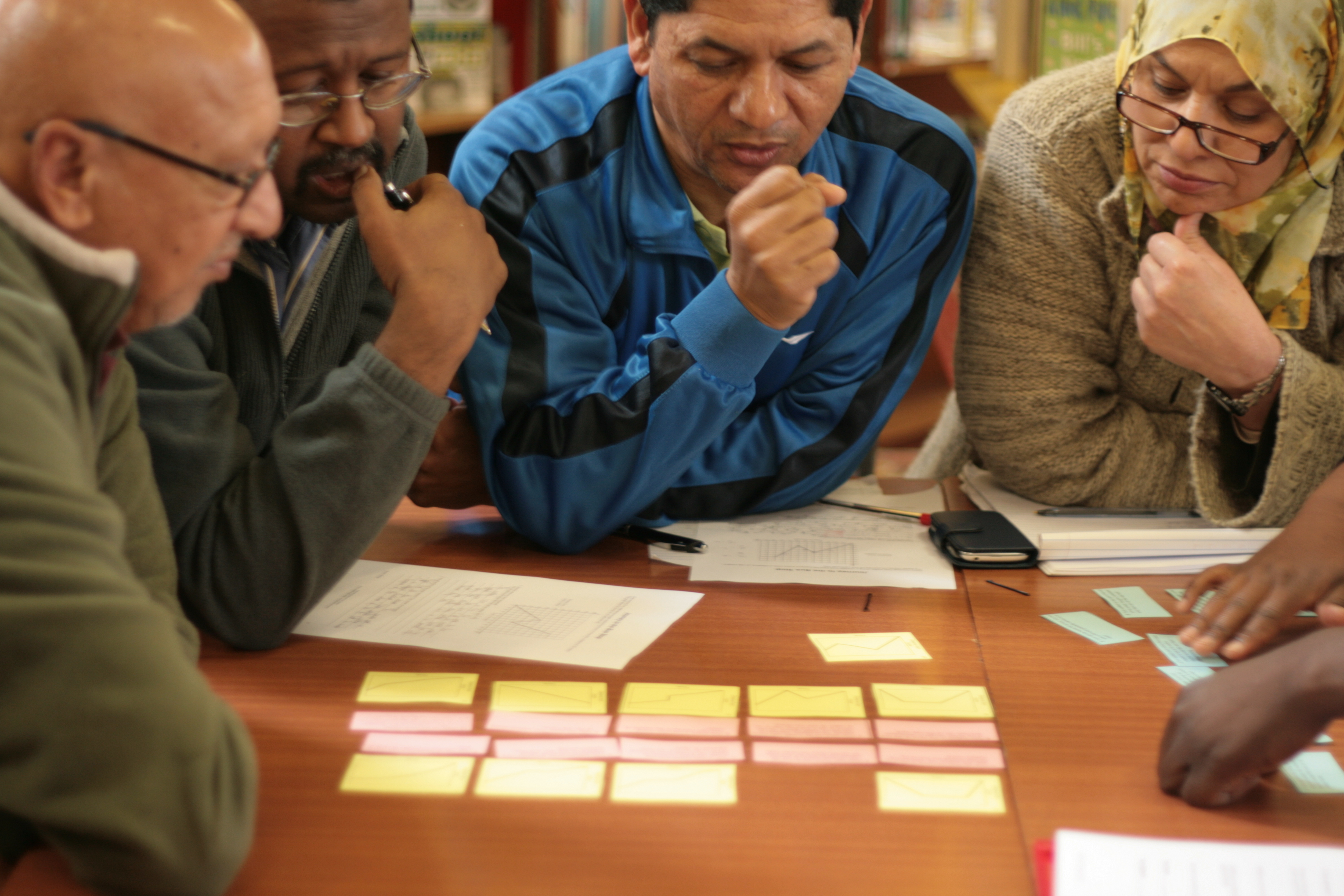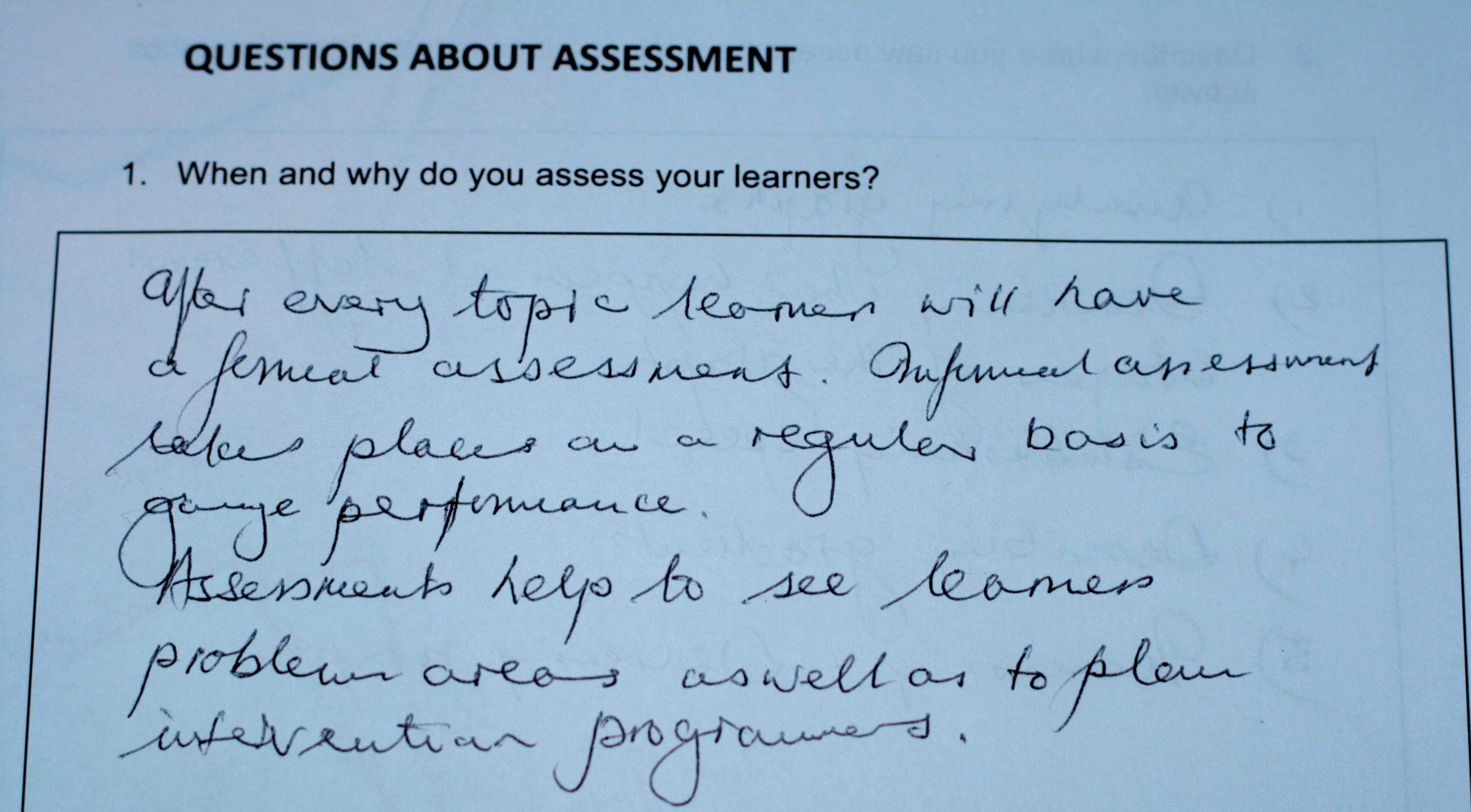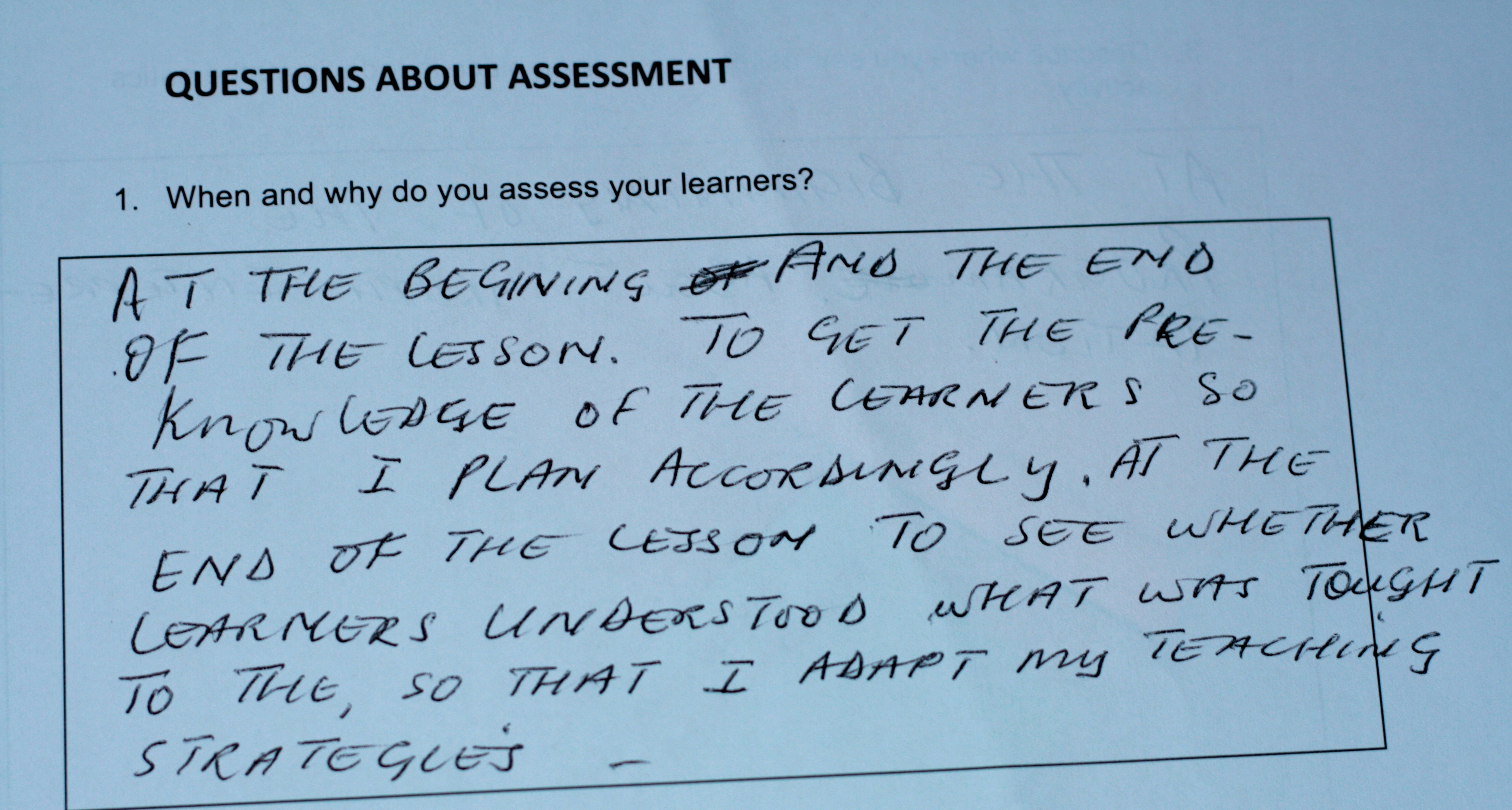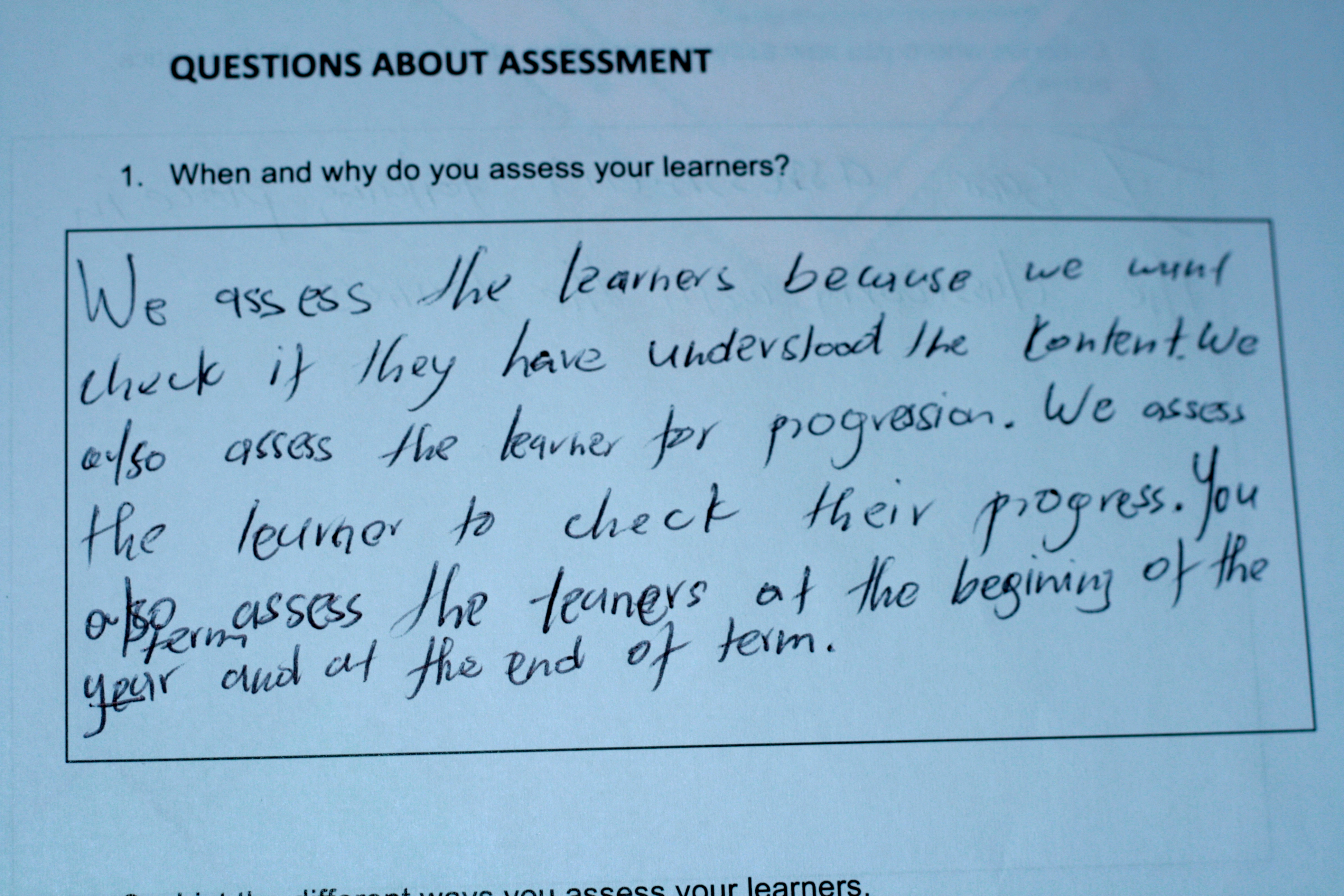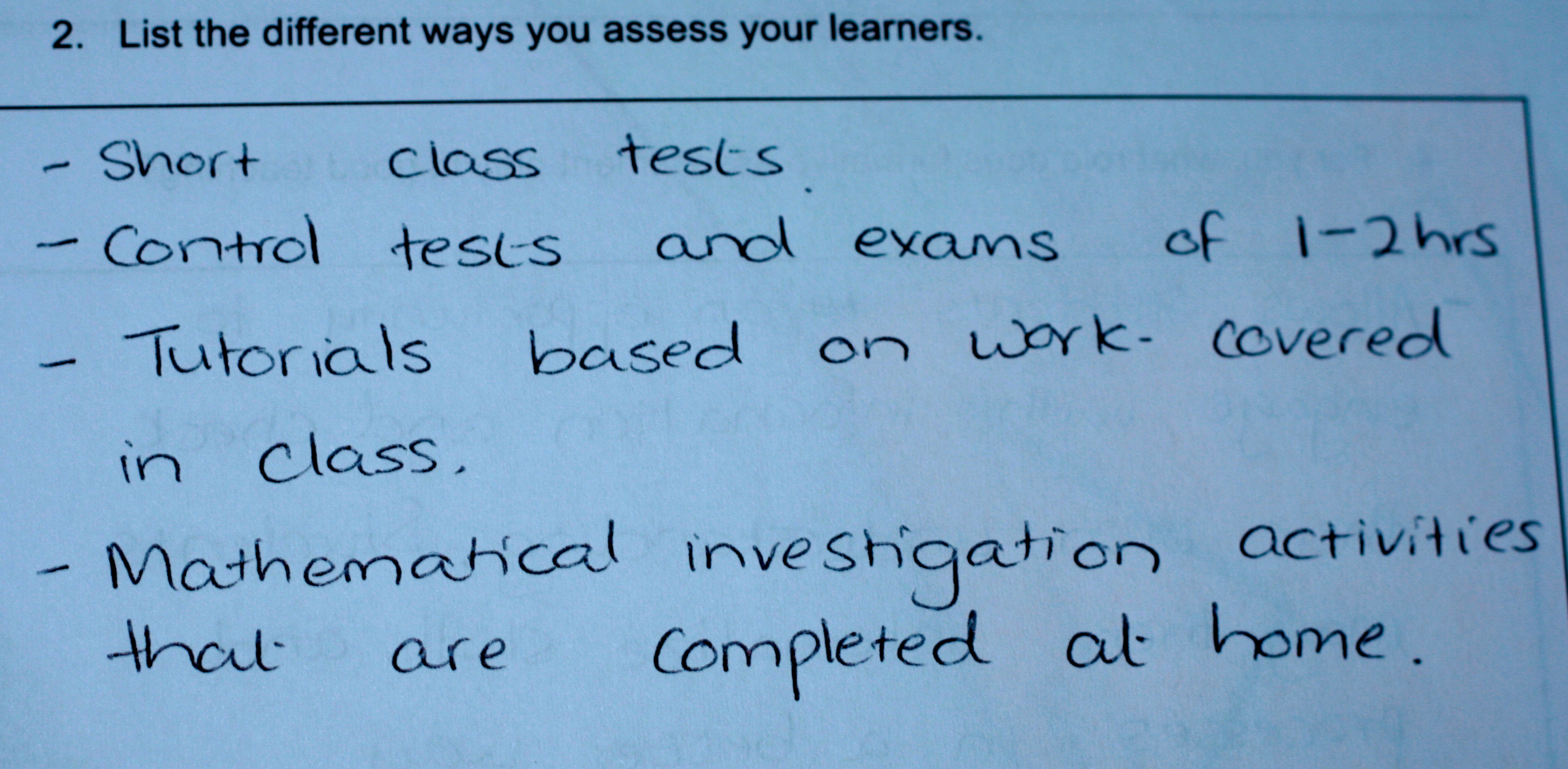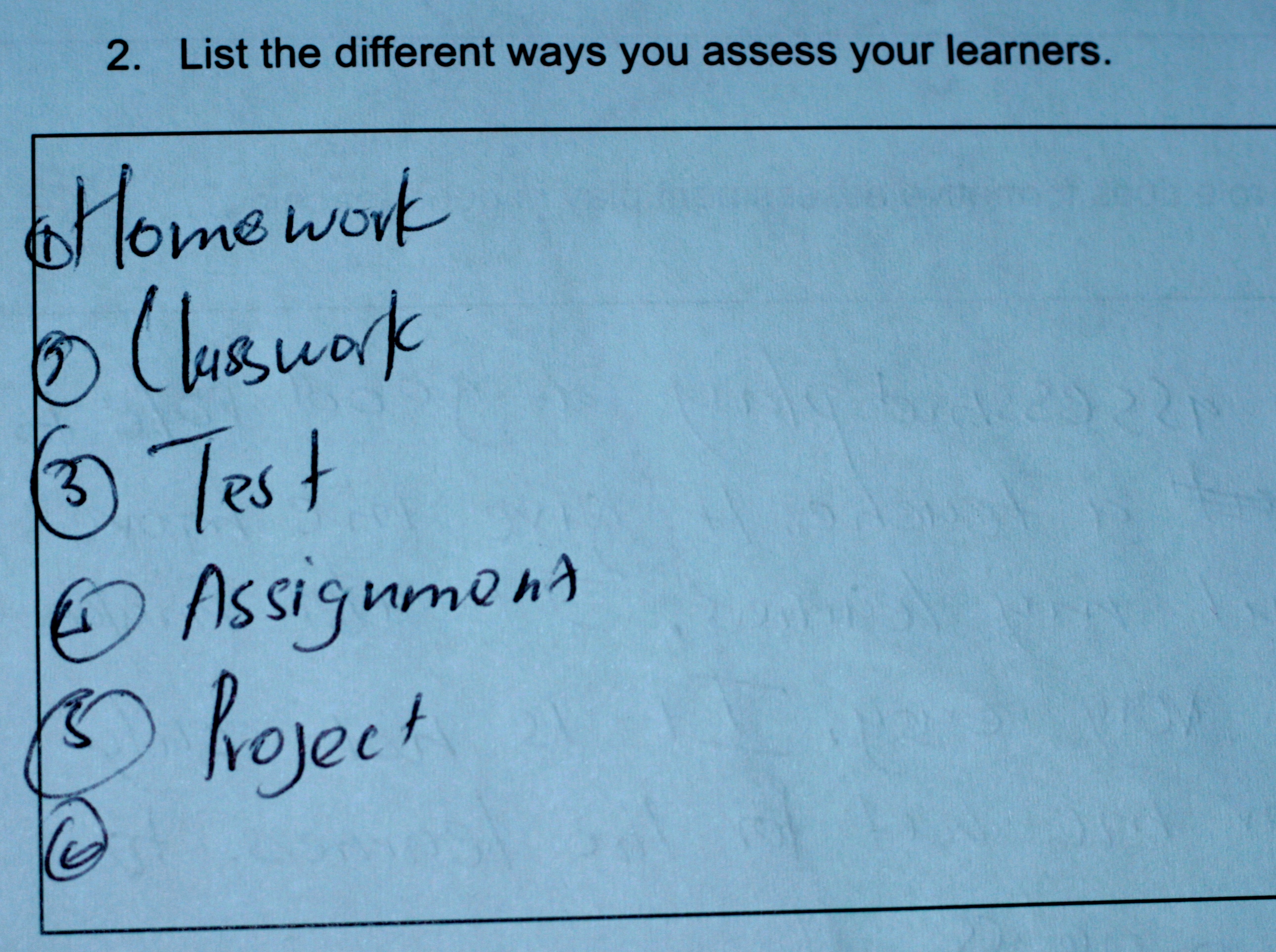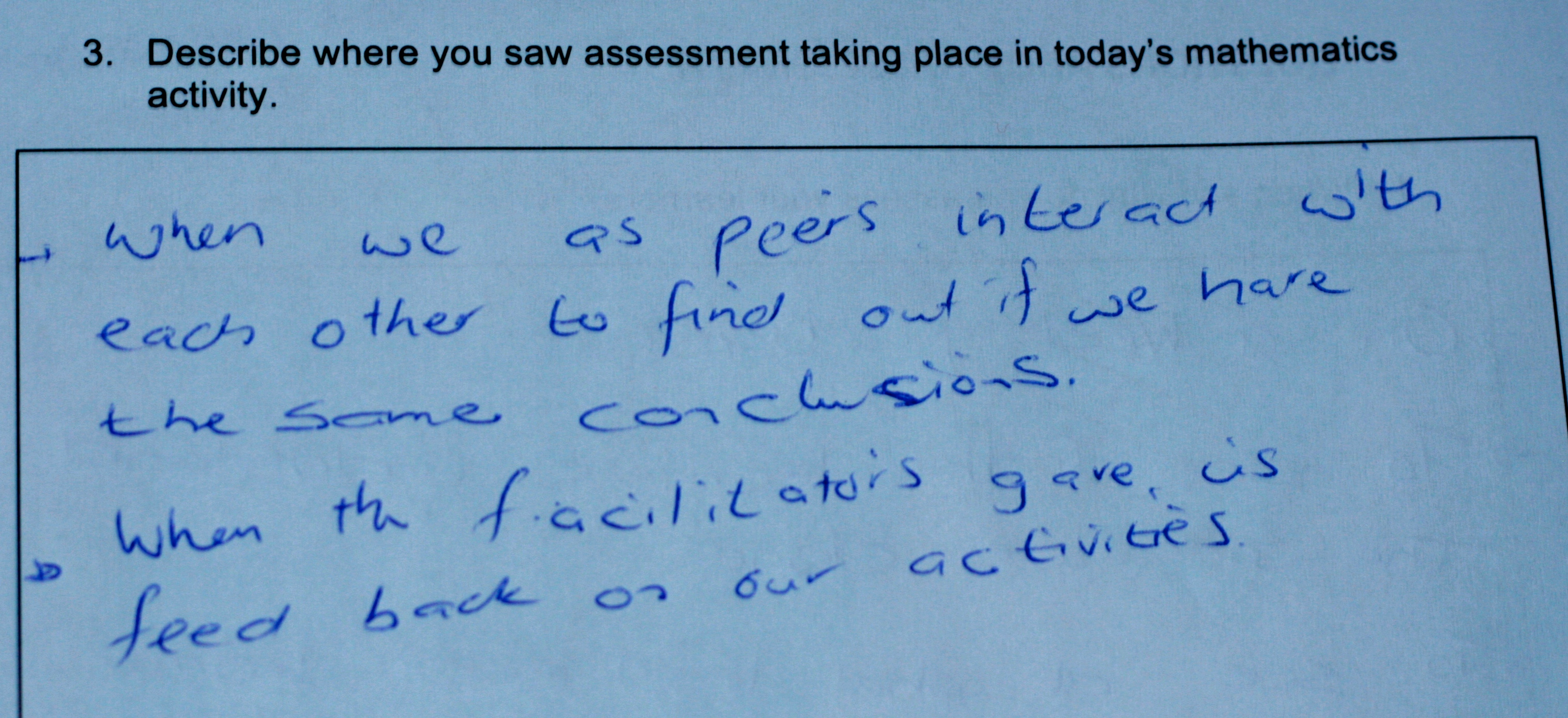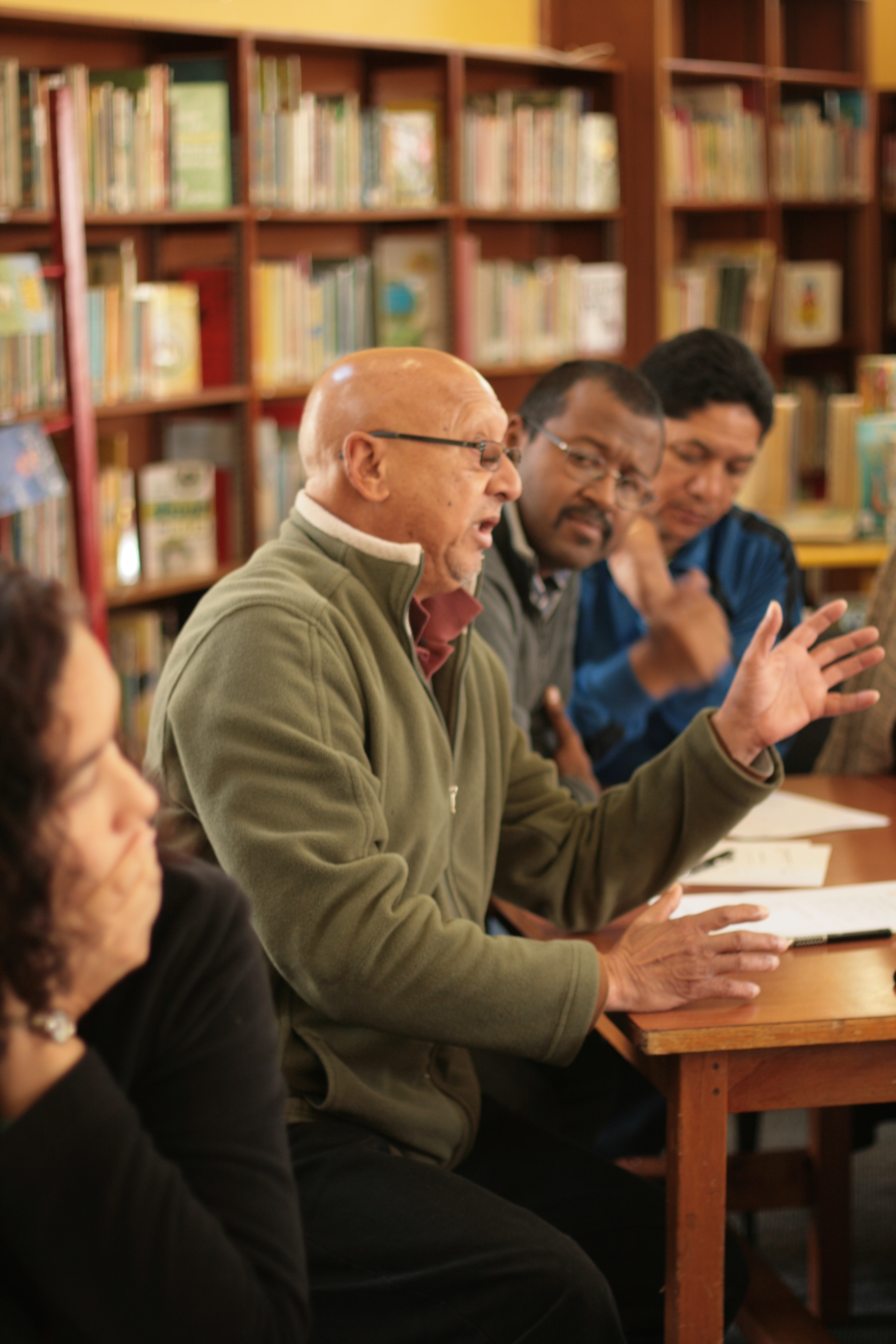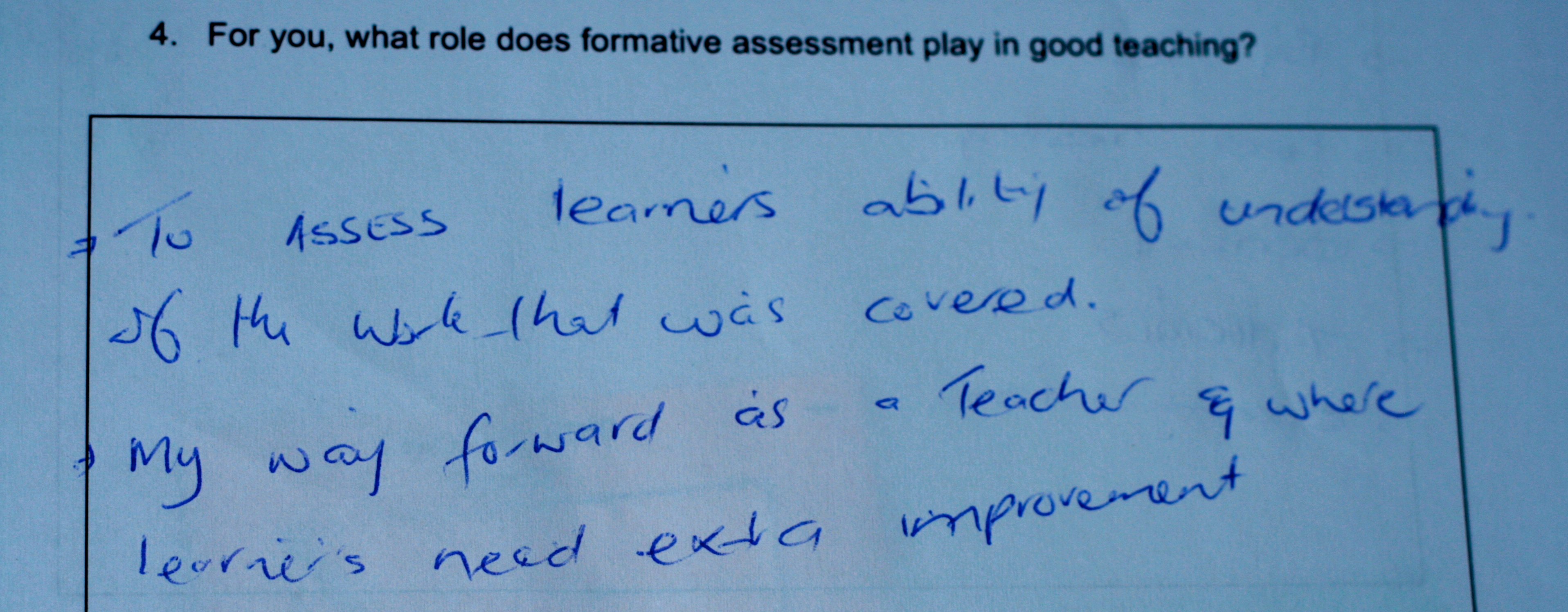The Metro South education district of the Western Cape is the district in which AIMS is located. The Director, Glen van Harte, invited Grade 8 and Grade 9 teachers from all schools in the district to attend a seminar at the John Graham Primary School in Plumstead, Cape Town.
Three members of the AIMSSEC team contributed to the session: Marie Joubert, Ingrid Mostert and Barrie Barnard. Thirty-six teachers and Glen attended the seminar. The room was arranged with with seven tables, each with six chairs.
To begin, Glen welcomed the AIMSSEC team and Barrie outlined briefly some of the work of AIMS and AIMSSEC.
Marie provided a brief outline of session, explaining that it would begin with some school mathematics. She asked each group to open the folders on their tables, remove the question sheet ‘Journey to the Bus Stop’ and to work in pairs to complete the questions. The questions on this sheet are designed to provide the classroom teacher with knowledge about their learners’ current levels of understanding about the topic, in this case interpreting time-distance graphs. They are then able to write some questions on each learner’s sheet, which will help the learner move forwards.
One teacher’s response to the ‘Journey to the Bus Stop’ questions
However, as the audience in this seminar was the teachers, who would already have much of the knowledge these questions were designed to assess, it seemed to make more sense to ask them to work in pairs and to discuss how their learners might respond to the questions.
The groups were then asked to find the two sets of cards in their packs and to work together to match graphical representations with narratives, or descriptions.
One pair of matching cards.
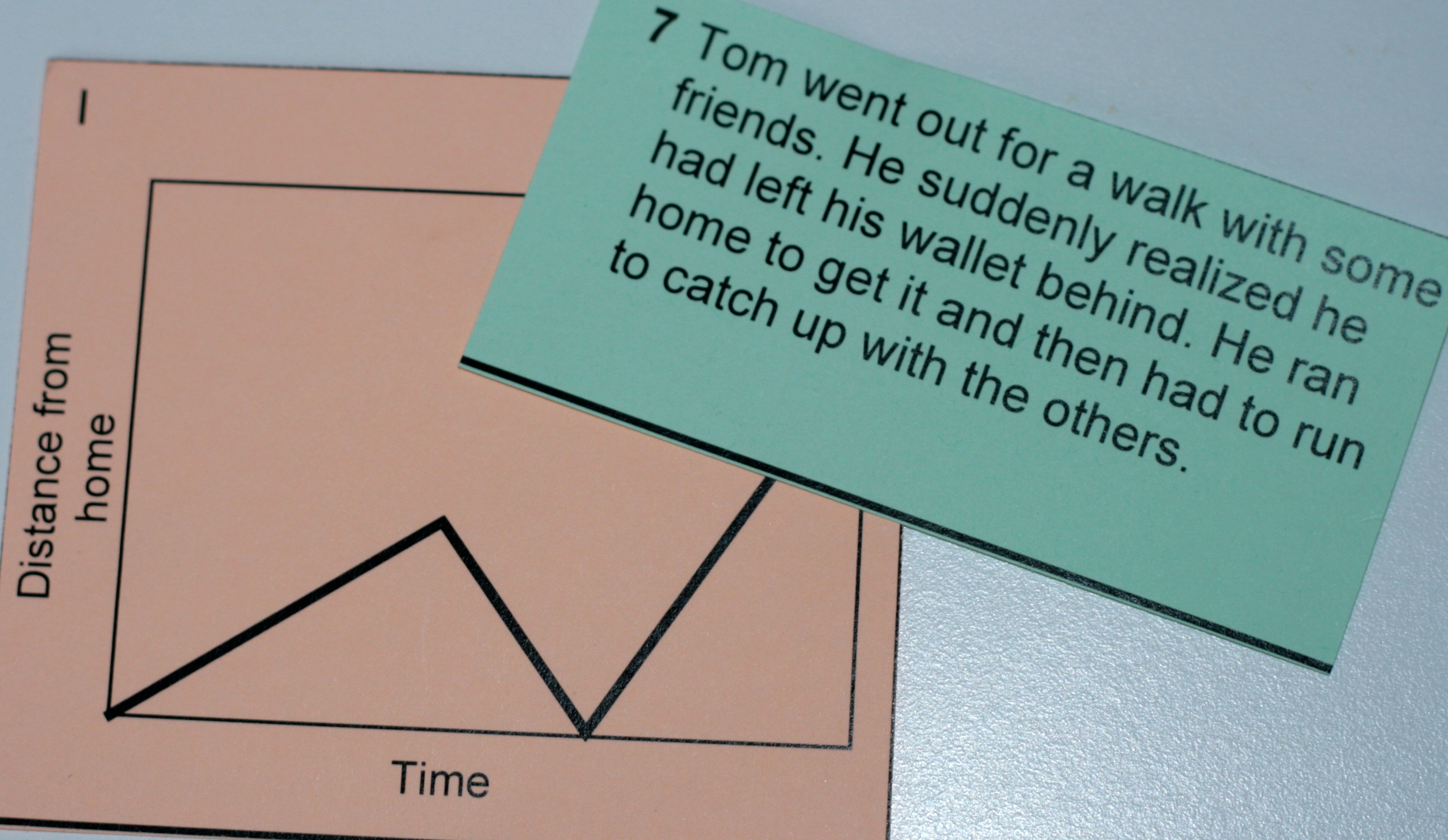
As they came to the end of this task, they were given a further set of cards, this time with tables of data, and asked to match up the tables of data with the pairs of cards.
Two sets of matching cards.
The teachers said that they liked the task and appreciated the careful task design. Our observations suggest that they enjoyed working on the task: they became very engaged and there was much discussion, disagreement, moving cards around and so on, until solutions were finally agreed.
One group of teachers engaged in the card matching activity.
They remarked that even though they know the subject matter, the task still engaged them and generated much discussion. Many of them said that they might use this task, or a similar one, with their own classes. However, some teachers predicted some difficulties with doing tasks such as this in their classrooms. For example, one teacher explained that there was too much text on the ‘description’ cards and that his learners would not be able to read and understand these cards. In part, this is because English, which is the Language of Learning and Teaching (LoLT) is not their mother tongue. Other teachers predicted that using the tasks with a large number of learners (many teachers said that they had classes of more than 50 learners) would be challenging. One teacher said that because of her large classes she would use the task in her remedial sessions after school where she works with a smaller number of learners.
To conclude this part of the seminar, Marie explained that the activities: the initial questions and the card matching activity, were taken from a lesson designed as a ‘formative assessment lesson’ produced by the Mathematics Assessment Project team at the University of Nottingham, in the UK. She told them how the lessons are supported by guidance for teachers such as an outline lesson plan, common errors in the area and questions the teacher might ask students.
A tea break followed and then Ingrid explained carefully that the seminar is about a research project and that as such, needs to follow research ethical procedures. She said that research participants need to be told what the project is about and they need to agree to take part. Having briefly explained, she asked them to complete the ethical clearance forms which provide an option for participants to a) agree to anonymous use of the data they provide and b) agree to Fasmed using photographs of them in research reports, dissemination and publicity. It was made clear to the teachers that they could choose not to agree to either or both these and that they would be in no way disadvantaged if they decided to do this.
After this questionnaires were handed out. These asked:
- When and why do you assess your learners?
- List the different ways you assess your learners.
- Describe where you saw assessment taking place in today’s mathematics activity.
- For you, what role does formative assessment play in good teaching?
Teachers were asked to answer only the first three questions, then to discuss in groups and then to share the key points. Ingrid assigned one of the three questions to each group and asked the group to feed back about only that question.
A teacher adds her responses to the questionnaire.
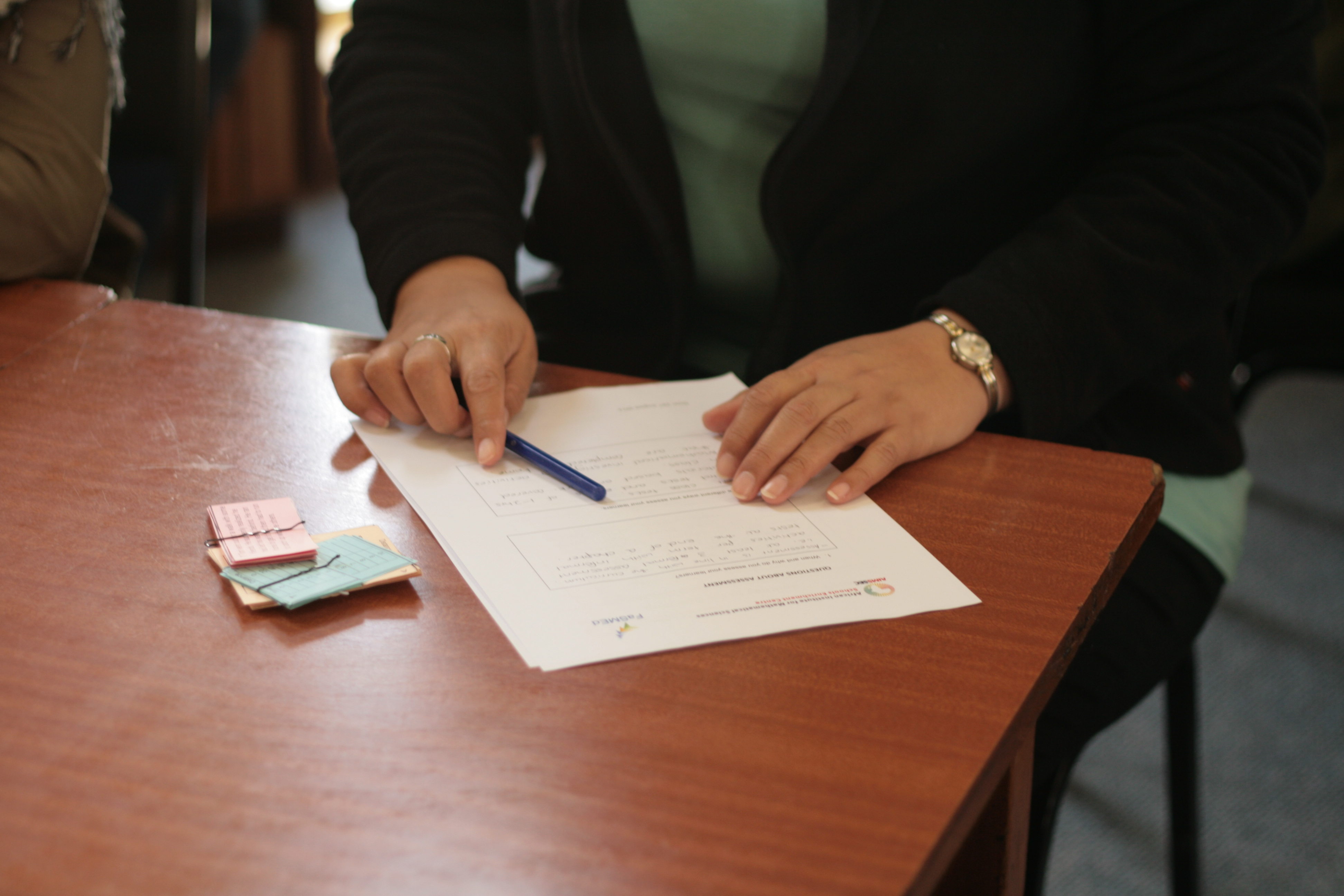
The written responses will be analysed but here are some examples.
When and why do you assess your learners? (Examples).
List the different ways you assess your learners. (Examples).
Describe where you saw assessment taking place in today’s mathematics activity. (Example).
In the next phase of the workshop Marie introduced some video footage*. She explained that the video is of a group of three girls in a school in Derbyshire, UK, working on the same task as the teachers had worked on before tea. She asked teachers to think about what the learners are doing and what they are learning (and how do you know?). In a second video clip, a teacher intervention is recorded. The seminar participants were asked to consider how the teacher in the video deals with the students’ struggles.
In the group discussions that followed, teachers made the following points about the student learning:
- they were learning to listen to one another
- they were learning to make an argument
- they were learning to collaborate
- they were learning about multiple representations of a situation
- they were learning to interpret graphs.
They also discussed the teacher’s intervention and remarked that he avoided giving the students any answers. Instead he asked more questions.
One of the teachers shares his group’s ideas.
The teachers then completed the questionnaire to answer the fourth question about formative assessment in good teaching. The idea behind delaying answering this question was that the video and the discussions that following might help teachers articulate their thoughts more easily.
For you, what role does formative assessment play in good teaching?
Marie went on to explain more about the FaSMEd project, explaining that it is a European project involving nine countries. She told the group something about the other partners, explaining where their particular expertise lies and then went on to discuss AIMSSEC’s way forward. This involves working with teachers to develop a South African version of the toolkit which will be closely linked to the Curriculum and Policy Statement, CAPS.
AIMSSEC will welcome any and all teachers who wish to participate in some way, and the level of participation can be negotiated. The only requirements for these teachers is that they are currently practising as teachers in a Grade 8 or Grade 9 classroom.
Marie added that Fasmed will, in particular, work with about ten teachers intensively and these teachers will be selected from those who say they are interested. These teachers will be provided with appropriate digital technology to help them with the research.
To finish Marie addressed the question: “What’s in it for teachers?”, suggesting that taking part in the project represents significant professional development for teachers.
She told the teachers that a meeting would be held at AIMS on 30th October 2014 at 3:30 pm for anyone interested in taking part, and asked teachers to provide their email addresses if they would like to receive an invitation. She explained that providing an email address does not, at this stage, represent any commitment other than to receive an email.
Finally, in the last ten minutes of the seminar, Ingrid showed video which was produced as part of a professional development resource for an EU project called Primas. She selected video which discusses the use of posters in maths lessons. The video suggests that posters can give teachers information about the students’ thinking. As the expert (Malcolm Swan) on the video states
“By asking a group of students do do a poster to show you something you find out all the things that the group is thinking, and that informs you”.
The workshop participants discussed the video, and generally appeared to agree that posters could be very useful in the classroom, not only as a way of making the students’ thinking explicit, but also as a record of their work on the classroom walls. However, many suggested that they did not have resources for making posters available in their schools. The teachers also said that in their schools, nothing that was put up on the walls survives for longer than a day or two. They explained that posters get torn, defaced and removed.
To end the session, Glen thanked the project team and all teachers for coming along.
